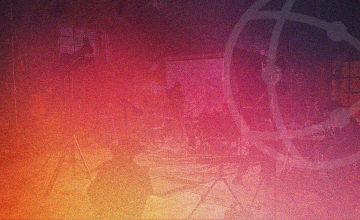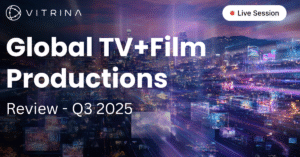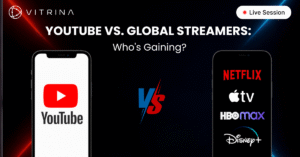At IBC2025, the Advanced HDR by Technicolor initiative is promoting a dynamic, frame-by-frame conversion process for HDR images. This approach aims to enhance the quality of HDR content, moving away from static methods that limit its potential.
AMSTERDAM — At IBC2025, the Advanced HDR by Technicolor initiative is encouraging broadcasters to adopt a more dynamic, frame-by-frame conversion process for high dynamic range (HDR) images. Proponents believe this method can significantly enhance the quality of HDR content.
While media companies are investing in HDR technologies to improve viewer experiences, the Advanced HDR by Technicolor initiative—collaborating with InterDigital and Philips—argues that current implementations using static look-up tables (LUTs) fail to fully realize HDR’s potential. Despite HDR’s promise of richer contrast and more vibrant colors, much of the content available today appears similar to standard dynamic range (SDR) programming.
According to Nick Mitchell, a Media Solutions Consultant at InterDigital and contributor to the initiative, the industry’s reliance on static LUTs for HDR-to-SDR conversion workflows limits the dynamic qualities that define HDR. He states, “Right now, many broadcasters are playing it safe. They’re limiting the range of HDR content to ensure consistent SDR output, but in doing so, they’re sacrificing the very qualities that make HDR feel like a premium experience.”
Mitchell highlights that brand protection drives this cautious approach. Advertisers and sponsors invest heavily to ensure that visual brand elements—like the exact shade of Coca-Cola red or sports team logos—are consistent across all formats. To meet these expectations, content producers often restrict HDR parameters, which can flatten the HDR experience.
“Static lookup tables are predictable and reliable, which makes them feel safe,” Mitchell explains. “But when you limit the HDR range to guarantee SDR conversion works as expected, you end up with a final product where HDR and SDR look surprisingly similar. That sameness is becoming noticeable—even to trained professionals.”
He recalls a recent conversation with a broadcast facility operator who questioned whether there was an issue with incoming transmissions because the HDR and SDR versions of a major sports broadcast looked almost identical. This feedback raises concerns about the perceived value of HDR content, especially as more services introduce tiered pricing models that charge a premium for HDR-enhanced streams.
Mitchell and his colleagues at Advanced HDR by Technicolor advocate for a shift from static workflows to a more dynamic, frame-by-frame conversion process that utilizes machine learning and real-time analytics. These technologies can maintain the integrity of both HDR and SDR signals without compromising creative intent. “Advanced HDR by Technicolor uses machine learning to analyze each frame and determine the best conversion path,” he explains. “This allows content creators to focus on delivering the best possible HDR version without constantly second-guessing how it will look in SDR.”
One key innovation in the Advanced HDR by Technicolor system is its ability to deliver a single-stream format—known as SL-HDR—that carries both HDR and SDR information. This simplifies infrastructure and reduces bandwidth demands, making it particularly appealing for over-the-air broadcasters operating under the ATSC 3.0 specification, where spectrum efficiency is crucial.
As streaming platforms and content providers compete for viewer attention, delivering a distinct visual experience becomes increasingly important. Mitchell believes that when implemented correctly, HDR can serve as a compelling differentiator for both viewers and advertisers. “Any advertiser wants their product to stand out,” he notes. “High dynamic range allows for greater visual impact—brighter highlights, deeper shadows, more vivid colors. That can make a commercial more memorable and effective.”
However, many sponsors have yet to experience HDR’s full potential because the content they support is still constrained by static workflows. Mitchell sees an opportunity for advertisers to engage more in the production process, advocating for dynamic HDR workflows that enhance brand visuals. “We need to start bringing sponsors into the conversation,” he says. “They have a stake in how their products are perceived, and HDR—done right—can be a huge asset for them.”
Currently, SDR remains the dominant viewing format, but industry experts agree that a tipping point is approaching. As more consumers upgrade to HDR-capable displays, the expectation for premium content to utilize these capabilities will grow. “When that flip happens—when HDR is being viewed more often than SDR—the current strategy won’t hold,” Mitchell warns. “At some point, we’ll have to decide which version we optimize for. If we want HDR to stand out, we have to start preparing for that shift now.”
This transition will likely require a reevaluation of priorities throughout the content pipeline, from camera shading and color grading to transmission and device compatibility. The supporters of the Advanced HDR by Technicolor initiative argue that dynamic HDR solutions aim to future-proof this transition by enabling flexible, scalable delivery models that adapt in real time.
Early adopters of the Advanced HDR by Technicolor workflow have already validated its effectiveness. The solution has been integrated into ATSC 3.0 deployments and has shown the ability to reduce bandwidth consumption while maintaining visual quality across formats. “Our customers regularly tout the benefits,” Mitchell states. “The system just works.”
As interest in immersive and high-fidelity media continues to grow, the demand for HDR experiences that fulfill their promise will intensify. Mitchell’s message to the industry is clear: Now is the time to embrace dynamic workflows that unlock HDR’s full potential—not just for consumers, but for the entire content ecosystem. “Let’s make great images,” he concluded. “That’s what this is all about.”
Experts from Advanced HDR by Technicolor will be present at IBC2025 in the Advanced HDR by Technicolor Meeting Room (Invitation Only) – IABM Lounge, Meeting Room #6. Here, the team will showcase a single master workflow leveraging dynamic HDR conversion that maintains high-quality HDR while providing the best possible SDR throughout the content value chain. Experts will demonstrate how dynamic conversion with Intelligent Tone Management outperforms legacy systems based on static LUTs. Visitors will also see the latest Nextgen TV conversion devices integrated with Advanced HDR by Technicolor, including Tolka, MyVelo TV, Geniatech, and Zinwell. IBC2025 attendees can book a meeting here.
Disclaimer: This article has been auto-generated from a syndicated RSS feed and has not been edited by Vitrina staff. It is provided solely for informational purposes on a non-commercial basis.




























